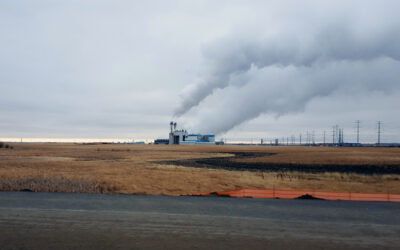Before the year is out, the federal government will publish the second report on Canada’s progress toward the 2030 emissions reduction target. It has some bad news to deliver.
The bad news is that although Canada has made some progress in reducing its emissions, the country is far off track to its 2026 and 2030 targets and it will be difficult for the country to get back on course. But a substantive progress report will still be useful. As the Canadian Net-Zero Accountability Act (the Act) makes clear, these documents should not only report on progress, but should also be tools for steering Canada back toward its goals, which include the long-term aim of reaching net zero emissions by 2050.
When the federal report comes out, the Canadian Climate Institute will conduct a thorough assessment, like we did in 2023 when the last progress report was released. After revisiting our expectations for the last report and reviewing analysis of the legal requirements of the Act, we have outlined four elements that will decide the usefulness of the next progress report.
1. Detailed and comprehensive updates on policy implementation
The Act requires the government to provide an update on federal measures from the 2030 Emissions Reduction Plan and its other climate strategies, along with measures undertaken in co-operation between federal and provincial governments.
Last time, the federal government addressed this requirement by providing a numbered list of measures indicating the responsible federal departments, noting any spending associated with the measure, and assessing the status of the measure, such as whether it was under development, ongoing, or concluded. That information was valuable but insufficient to understand how measures were contributing to Canada’s progress.
In the next report, the federal government should provide more details. A line-by-line update should indicate not only the status of measures—including those that have been removed—but next steps for those yet to be finalized. It should acknowledge key risks facing their implementation. It should identify the intended outcomes of each measure. And to understand how it all fits together, the government should explain what it is doing to coordinate the implementation of these policies, both within the federal government and across the federation.
2. Credible, transparent, and up-to-date emissions projections
Emissions data are at the heart of the progress report. According to the Act, the report must include the latest greenhouse gas emissions data and projections of how emissions could change by 2030. Those data should be as recent and as rigorously tested as possible.
First, recency: at the time of writing, the latest emissions data only went up to 2023, and the most recent projections were nearly a year old. The federal government should update both in time for the progress report. Last year, the government proved that it could produce an early estimate of emissions, so it should do so again this year. Climate policies have changed substantially since the last projections were published, so new ones are sorely needed.
Second, those projections must be rigorous. The last report followed some best practices, providing details about the assumptions used and breaking out the results by year and by sector. Yet it also contained a scenario that used a modeling approach known as backcasting to show how Canada could achieve the 2030 target. Backcasting models how emissions evolve under a cost-effective pathway to a target, rather than adding up the reductions that policies will achieve. Backcasting can be useful for some purposes, but a credible report on progress should be based only on scenarios that model actual policy proposals.
3. Substantive assessment of options to correct course
Given that Canada is only making limited progress reducing its emissions, that some climate policies have been removed or weakened this year, and that uncertainty prevails about some key measures that could help fill the gap, a credible progress report must conclude that Canada is off track to its 2026 and 2030 targets. A useful progress report should also show what the government plans to do about that.
The Act says that if projections show Canada to be off track, then the report must include “details of any additional measures that could be taken to increase the probability of achieving [the] target.”
An interpretation of the Act from Ecojustice outlines how the government can fulfill this requirement. Noting the Act’s use of terms like “details” and “probability,” and the clear reference to achieving targets, the authors write that the government should not only list possible measures to close the gap, but should also provide:
- their expected emissions reductions;
- the department responsible for their implementation;
- the timeline for implementation;
- any potential barriers to implementation; and
- the likelihood (quantified) that these measures will be implemented as necessary.
These requirements are not only reasonable, but crucial to fulfilling the purpose of Canada’s climate law, which is about not only setting targets but promoting “transparency, accountability, and immediate and ambitious action” to achieve them.
4. Clear plans for future improvements
The 2025 progress report is only one of many documents required in the long process of planning, stock-taking, and adjustment laid out in Canada’s accountability act. That means the government has lots of time to improve on its work, and the upcoming report can help to lay the ground for those improvements.
One of the most important gaps in Canada’s progress reporting is the lack of indicators of progress other than emissions reductions. It is very challenging to track how many and what kinds of clean technologies are being deployed, for example, or how much private investment is flowing to different emissions reduction activities. The publication of this progress report is an opportunity to pilot some of those indicators, or at least to signal that governments will track them in future reports.
From reporting on Canada’s climate progress to driving it
This year has marked many transitions in Canadian climate policy: to a new federal government and toward new (and perhaps fewer) policy tools for tackling climate change. The 2030 Emissions Reduction Plan remains a useful guide to some of what Canada is doing, but it is no longer the comprehensive statement of the country’s plans to reduce emissions.
It is reasonable for Canada’s plans to change with time. But so long as the country retains its climate targets—which it must, by law and by scientific consensus—then its plans should retain their focus, which is to reduce the country’s emissions as quickly as possible, and to net zero by 2050. If the old plans no longer show how that can be done, then this next report should take up the task.








